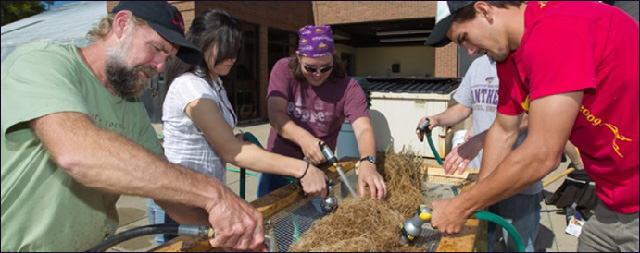
Undergraduate Student Work
Work/Availability
Open Access Undergraduate Student Work
Type of Work
Poster Presentation
Keywords
Typha--Growth; Typha--Morphology; Nitrogen fertilizers;
Abstract
In Iowa, there are three types of cattails (Typha spp.): Typha latifolia (broadleaf), Typha angustifolia (narrow leaf), and Typha x glauca. T. latifolia is native to Iowa, while T. angustifolia and T. x glauca are not native. Cattails are found in wetlands, highly productive ecosystems that provide many services such as water filtration and flood control.
However, Typha are opportunistic and invasive: if left uncontrolled, Typha grows rapidly by clonal reproduction, quickly dominating the ecosystem, lowering overall diversity and hurting the wetland’s conservation value. Being able to easily identify these taxa will improve the pace of future research.
The purpose of this study is to understand the effects of different nitrogen amounts on the growth and morphology of each Typha taxon. In order to achieve this, Typha was grown in 1.75-m mesocosms and in 25-cm pots with different amounts of fertilizer. Leaf length and width were measured, and a taxon was assigned based on those measurements. Leaves from these individuals were sampled, ground up for DNA extraction, purified, amplified by PCR, and sequenced. The data show how each taxon’s leaf height and width responds to differing nitrogen amounts.
Date of Work
Summer 2018
Department
Department of Biology
First Advisor
Kenneth Elgersma
Repository
UNI ScholarWorks, University of Northern Iowa, Rod Library
Copyright
©2018 Anissa Forero and Kenneth Elgersma
Language
en
File Format
application/pdf
Recommended Citation
Forero, Anissa and Elgersma, Kenneth J., "The Effects of Varying Nitrogen Amounts on the Growth and Leaf Morphology of Cattail Species" (2018). Undergraduate Student Work. 5.
https://scholarworks.uni.edu/ugswork/5



Comments
Summer 2018 U. S. Army, REAP Internship, University of Northern Iowa, Department of Biology, Cedar Falls, Iowa